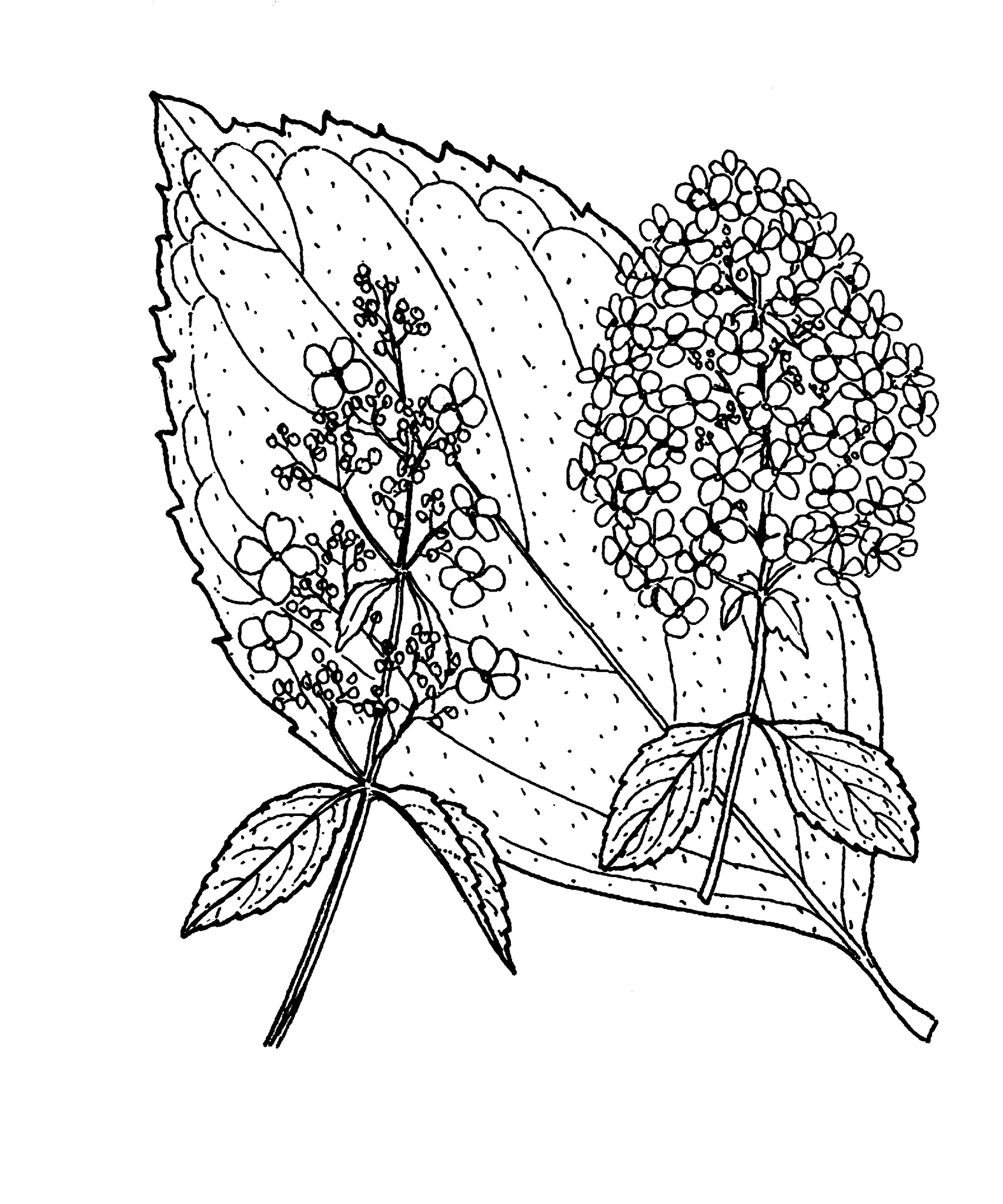
Large deciduous shrub, mostly to 3-4 m tall. New growth hairy at first. Leaves ovate, to 15 cm long, with a few bristly hairs above and on the veins below; margins toothed. Flower clusters elongated, more or less lanceolate in outline. Sterile flowers few on the outside of the cluster, mostly white at first but often soon pinktinged, to 3 cm wide. Fertile flowers numerous, creamy white; summer to autumn. Ovary half-inferior in flower and fruit.
H. heteromalla D. Don from Himalaya and W and N China is occasionally cultivated; it is similar but has the flowers in flat-topped clusters (corymbs) rather than branching up the stem (panicles) as in H. paniculata and its cultivars below.
E and S Japan, China, Russia.
Source: (2002). Hydrangeaceae. In: . Horticultural Flora of South-eastern Australia. Volume 3. Flowering plants. Dicotyledons. Part 2. The identification of garden and cultivated plants. University of New South Wales Press.

Hydrangea paniculata 'Floribunda'
Large shrub. A floriferous cultivar in which, unlike the species, every branch is terminated by an elongated, erect flower cluster. The small fertile flowers dominate the centre of the cluster which has a few sterile flowers on the outside, often with a red 'eye'. Int. Uk from Japan in 1867.
Hydrangea paniculata 'Grandiflora'
Flower cluster heavy, almost round to broadly ovate in outline, dominated by large sterile flowers that soon develop a pink tinge. Int. Uk from Japan by Siebold.
Hydrangea paniculata 'Praecox'
Most similar to 'Floribunda' but the flower clusters relatively small and dense and sterile flowers only at the base, these having longer, well-spread and narrower sepals than 'Floribunda' or 'Grandiflora'. Early flowering. Grown at the Arnold Arboretum from seed collected by Prof. Sargent in Hokkaido, Japan, in 1893.